Deliciously Grain-Free

Danielle seems to have a gift for creating grain-free recipes that aren’t just healthy, they’re beautiful to look at and taste delicious too. When she recently came up with her grain-free bread, she set a new standard. I made her amazing Almond Flour Zucchini Bread. (Photo below)
Danielle shared her story and a bit about her recipes.
Q & A:
Q: Please describe how changing your diet changed your health.
A: I was diagnosed with Ulcerative Colitis, an autoimmune disease, when I was 22 years old. After a few years of suffering, multiple hospitalizations, and doctors telling me that what I ate wasn’t a factor in my disease, I decided to take matters into my own hands and drastically change my diet. We already ate fairly healthy and stayed away from processed food, but it was clear that big changes needed to be made. It was a gradual process for me and I eliminated things along the way as I learned what my body needed. I started by going off all“white” foods – white sugar, white flour, white rice, potatoes etc. I switched to whole-wheat pastas and flours and used alternative sweeteners. After a few months of doing this and not noticing a difference I went gluten-free, changing our diet again to eliminate wheat and incorporate more brown rice, gluten-free oats, and quinoa.
I had another large flareup while experimenting with this diet, and was handed a copy of the book “Breaking the Vicious Cycle” which was written to help those with Crohn’s, Colitis, Celiac, and Autism. Essentially the diet written in the book is free of all grains, refined sugar, and lactose. It’s called the Specific Carbohydrate Diet (or SCD) and has proven to cure people with IBD and Autism after strictly following the diet for a couple of years then gradually reintroducing certain foods back into your diet. It took me a couple of months to mentally prepare to completely change the way I knew how to cook and eat, but after being hospitalized again and near death, I decided it was my last alternative to surgery
While I wish I could say I’ve been completely healthy and in remission since starting to eat the way I do, I cannot. I do feel much better overall and have have much improved gut function, fewer migraines, less overall stomach upset and higher energy (even with a toddler!), I feel like I am still learning what the exact combination of diet, supplements, and medications my body still needs, but things have improved so much since I was diagnosed 5 years ago.
Q: Do you ever have to give up on a recipe? Is there something you’ve tried and couldn’t figure out? Or do you always keep at it until you do?
A: I’m a bit of a perfectionist with a Type-A personality, so giving up feels like failing to me. Stress contributes greatly, though, to my disease, so I have had to work hard at finding a balance in the kitchen. There are some people that de-stress by working out or cleaning the house, but I love creating and perfecting recipes. Things don’t always turn out like I hope they will, and there are definitely recipes that I’ve had to make dozens of times to get it just right. (For instance, my grain-free sandwich bread.) It just feels like such an accomplishment when I’m able to share food with people that I’m truly proud of. I have now amassed a collection of over 125 grain-free recipes and publish two to three new ones a week, so the collection is ever growing!
Q: You have a long list of recipes on your blog. How do you decide what recipes to try making? (Is it something you remember from pre-SCD, a food you see and want to duplicate, what’s in season, etc.?)
A: Most of my inspiration comes from things that I used to eat, or things that I wish I could order when we go out to eat. I like to try to recreate them so I don’t feel like I’m missing out on anything. And most of the time, I think my rendition is better than the original! There’s just something to be said about real, fresh ingredients rather than the processed things that are so readily accessible to us. I also love perusing food websites and seeing what kind of recipes the general public like to see and pushing myself to see if I can make something that tastes and looks the same. Oh and I love tricking people! It’s fun serving guests something that they think is an ordinary plate of waffles or chocolate cream pie and then telling them it’s grain-free and dairy-free!
Q: You frequently combine almond flour and coconut flour. Do you find this improves the texture or is there another reason?
A: I think the biggest problem people on restricted diets face is boredom, and I was getting bored with the flavor and texture of almond flour. That’s why you have seen a lot of recipes using both coconut and almond flours, or some without almond flour at all. I was never happy with the slightly soggy consistency a lot of almond flour recipes seem to produce, and the ones with solely coconut flour had too much of an egg taste for me. I still have quite a few recipes using only almond flour (my Almond Flour Zucchini Bread is one of my favorites) but I think that coconut and almond are a match made in heaven. The almond flour seems to add the texture and substance of a grain while the coconut flour helps to soak up the extra fat and liquid the almond flour produces, making them a little more lightly and fluffy. And I love that it doesn’t taste like coconut, because I surprisingly don’t really like the taste! I also like the calorie and fat ratio that you get when you combine them. A lot of people forget that while almonds are extremely healthy, they still have a lot of calories in them. Eating an almond flour muffin is much higher in calories than other flours, so subbing in the coconut flour for some of it helps reduce that and also adds a healthy serving of fiber.
Q: What do you enjoy most about having a blog?
A: I started my blog about three years ago after going off grains and feeling like there was a lack of recipes out there for the lifestyle. I was enjoying experimenting with all of my new ingredients like almond and coconut flour, and wanted to share what I was learning with others like me. My main goal is to provide recipes to those on a restricted diet and leave them feeling satisfied and happy rather than deprived. And, now that I’m a mom, I love sharing stories about my life with my son as well. It’s a great outlet and hobby for me after spending an entire day chasing him around!
I would have to say the most rewarding part about running the blog is the feedback from my readers. It makes my day when I get a comment that someone liked something or even just the simple comments thanking me for what I do. I find so much joy in creating the recipes and sharing them, so it’s so nice to hear that I’ve brought joy to someone else’s kitchen or dinner table. I also feel like I’ve taken a really negative situation such as having a life-long disease and spun it to be a positive one, where I am able to help others that are suffering work towards the road to health. I receive multiple emails a week from young women my age who struggle with Crohn’s, Celiac, or UC that are just looking for someone like them to talk to and let them know that life isn’t over, that they can still enjoy food, or the biggest one: that they can likely still have children. I scoured the internet for hours upon hours when I was first diagnosed and emailed people much like the emails I’m receiving now. I just never realized that my story would impact people, particularly women my age.
Thank you Danielle for sharing your story and your time with us!
I found quite a few recipes on Danielle’s site that I wanted to make. I really wanted to make her new bread but didn’t have enough cashew butter (an order is on its way) so it will have to wait.
I’m so glad I chose to make the recipe I did. Without exaggerating, this is the best almond flour baked good I’ve ever made. I’ve had many that I enjoyed but Danielle somehow made these taste like regular flour, not almond flour. The amounts of cinnamon and nutmeg are perfect. I made the recipe as muffins and we had them with breakfast.


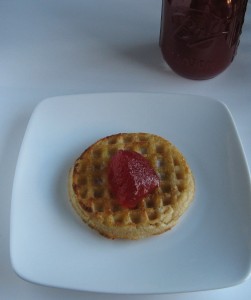
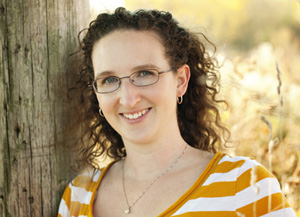
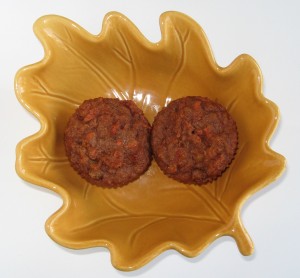
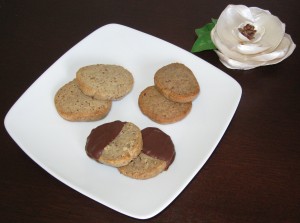
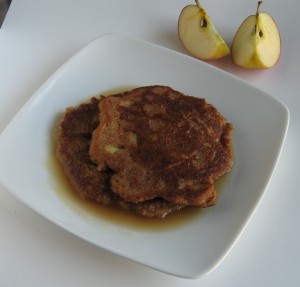






















 Thank you for visiting. I've spent many, many hours reading blogs and books about the gluten-free life. I love research. Really love it. I'm a writer so this is part of what makes me tick. But I know not everyone likes it. My goal is to bring this wealth of useful information to you here through interviews with prominent people from the gluten-free community. I hope that each time you visit, you’ll walk away with a little something new, something that helps you enjoy your gluten-free life even more.
Thank you for visiting. I've spent many, many hours reading blogs and books about the gluten-free life. I love research. Really love it. I'm a writer so this is part of what makes me tick. But I know not everyone likes it. My goal is to bring this wealth of useful information to you here through interviews with prominent people from the gluten-free community. I hope that each time you visit, you’ll walk away with a little something new, something that helps you enjoy your gluten-free life even more.